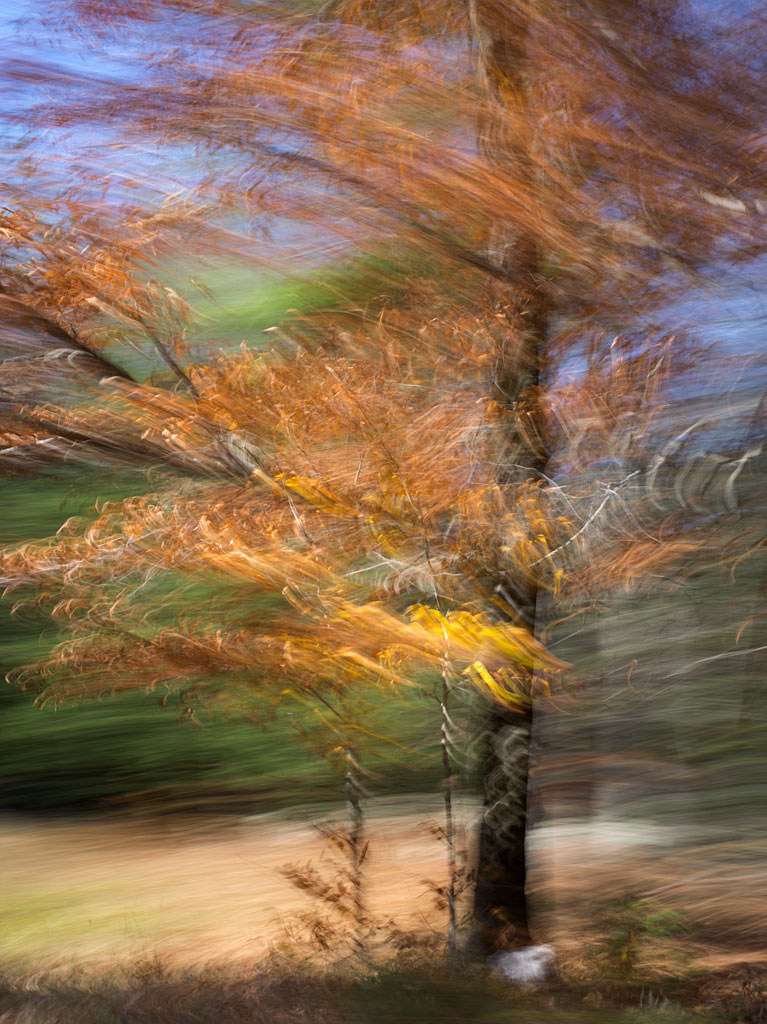 While Maine is most famous for its coastline, it is also home to some beautiful mountains. Bigelow Mountain is near the borders of northern New Hampshire and Canada. In 1976, the land was set aside as a preserve by the people of Maine. Bigelow is a 12 mile / 19 kilometer ridge that rises to 4,145ft / 1,260m and covers 33,000 acres / 133 km². The range is surrounded by Flagstaff Lake and Dead River to the north, west, and east, and Sugarloaf Mountain to the south. Click on the image for a larger view.
While Maine is most famous for its coastline, it is also home to some beautiful mountains. Bigelow Mountain is near the borders of northern New Hampshire and Canada. In 1976, the land was set aside as a preserve by the people of Maine. Bigelow is a 12 mile / 19 kilometer ridge that rises to 4,145ft / 1,260m and covers 33,000 acres / 133 km². The range is surrounded by Flagstaff Lake and Dead River to the north, west, and east, and Sugarloaf Mountain to the south. Click on the image for a larger view.
Old Man’s Beard—Usnea
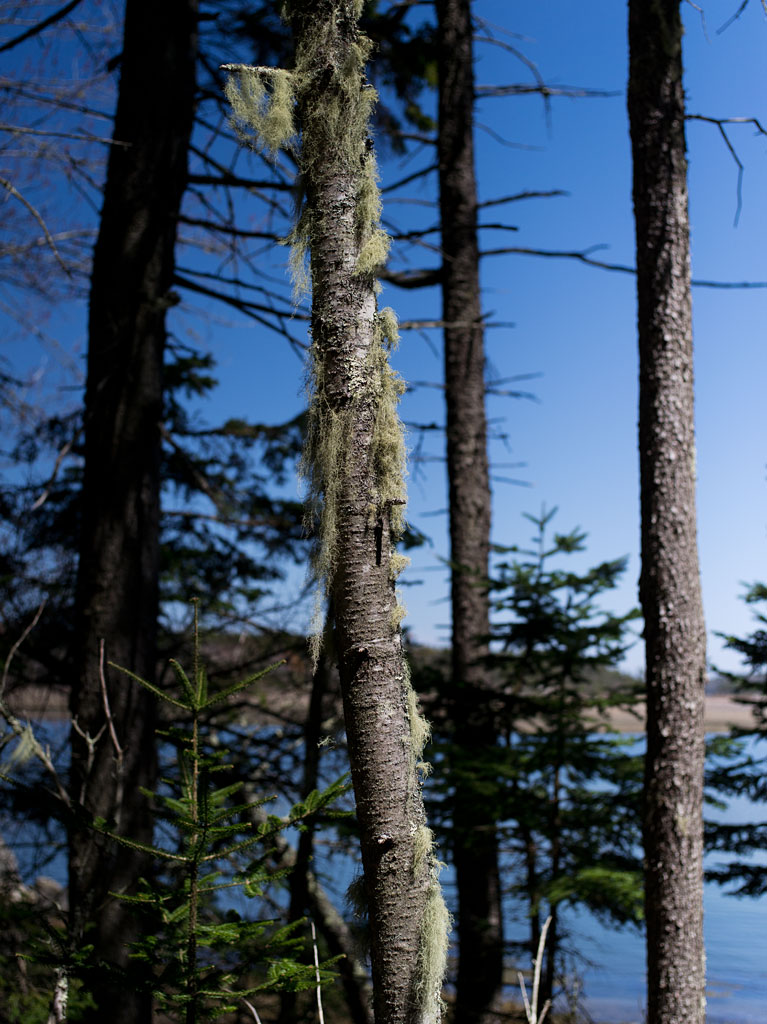 Usnea is a generic name for a rather broad group of lichen in the parmeliaceae family. Hanging from dying or sick trees like green cotton, it is mostly called by the common names of Old Man’s Beard or Beard Lichen. Although usnea indicates the symptoms, it is not the cause of the tree’s condition. Usnea is very sensitive to air pollution, especially sulfur dioxide, which can severely impede its growth.
Usnea is a generic name for a rather broad group of lichen in the parmeliaceae family. Hanging from dying or sick trees like green cotton, it is mostly called by the common names of Old Man’s Beard or Beard Lichen. Although usnea indicates the symptoms, it is not the cause of the tree’s condition. Usnea is very sensitive to air pollution, especially sulfur dioxide, which can severely impede its growth.
Usnea is believed to have antibiotic properties and was used like a sterile gauze for wounds. It is recommended to only use this plant externally. The lichen can also be used to create dyes for textiles, giving yellow, orange, green, blue, or purple hues. Click on the image for a larger view.
Spring at Marshall Point
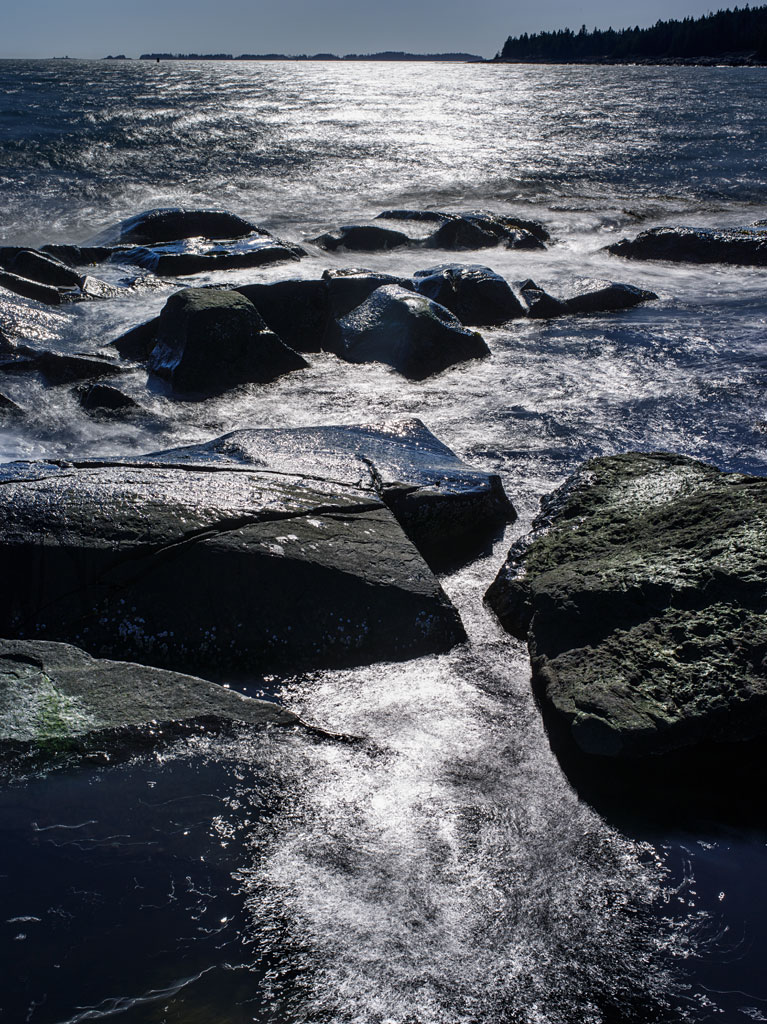 Spring has arrived. On Sunday, Naomi and I went out to Marshall Point at Port Clyde, Maine. The sky was cloudless and the world was filled with light–and heat; it was 52°F/11°C. While we still have snow on the ground at home, it has disappeared along the coast.
Spring has arrived. On Sunday, Naomi and I went out to Marshall Point at Port Clyde, Maine. The sky was cloudless and the world was filled with light–and heat; it was 52°F/11°C. While we still have snow on the ground at home, it has disappeared along the coast.
Marshall Point is the terminal of a peninsular that juts out into the Gulf of Maine on the western edge on Penobscot Bay. A string of islands continues beyond—Hupper Island and Thompson Island are on the horizon. The point is known for its lighthouse. Click on the image for a larger view.
Our Mourning Doves
 It has been a very long winter in Maine this year. The snow pack still covers our garden. The Mourning Doves, Zenaida macroura, have been sitting out on our deck whenever there is a glimpse of the sun.
It has been a very long winter in Maine this year. The snow pack still covers our garden. The Mourning Doves, Zenaida macroura, have been sitting out on our deck whenever there is a glimpse of the sun.
The dove gets its name from its deep plaintive call—actually, I find the call rather calming and peaceful, more of a purring than a wail. Like our Chickadees, the Mourning Doves spend the winter with us. It is a rather timid bird and forages cautiously under our feeders. Click on the image for a larger view.
Spring Salt Marsh
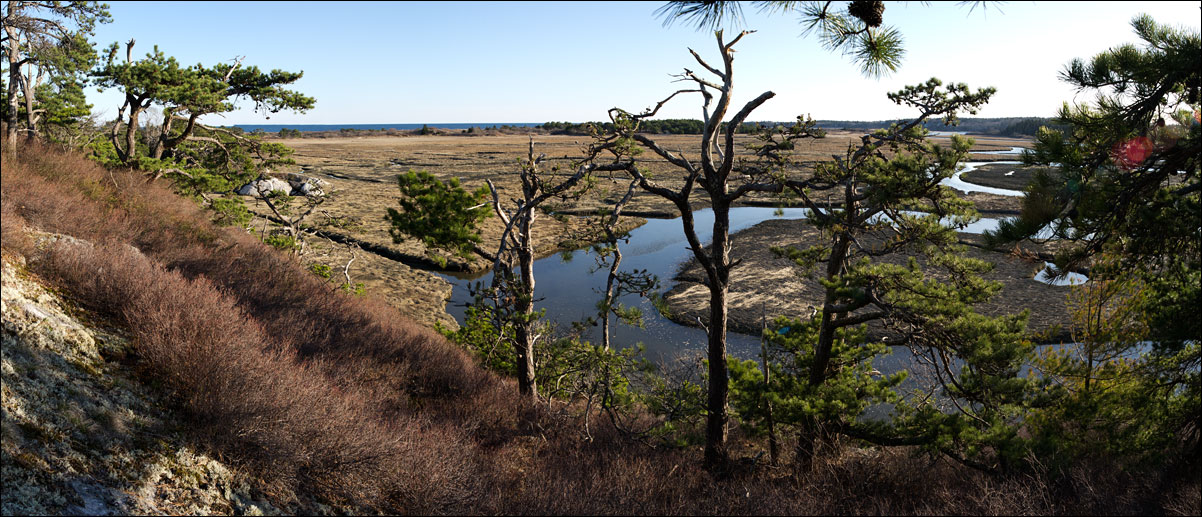 Winter eventually gives way to spring. The snow thaws, signaling the start of what is fondly referred to in Maine as mud season. The salt marsh at Bates-Morse Mountain Conservation Area is a tangle of flattened grass. There is not a burst of growth—the plants don’t seem to trust the threat of snow and frosts have gone, and they are right not to. But the air is scented with the season’s potential. Click on the image for a larger view.
Winter eventually gives way to spring. The snow thaws, signaling the start of what is fondly referred to in Maine as mud season. The salt marsh at Bates-Morse Mountain Conservation Area is a tangle of flattened grass. There is not a burst of growth—the plants don’t seem to trust the threat of snow and frosts have gone, and they are right not to. But the air is scented with the season’s potential. Click on the image for a larger view.
The Islands of Maine
 Maine is famous for its coast. Just south of Brunswick is a series of islands—Sebascodegan Island, Orrs Island, and Bailey Island—that take you out into the Gulf of Maine at the edge of Casco Bay. Fishing communities can be found around Orrs Island and Bailey Island, surrounded by the vacation homes. With the winter lingering into April, these islands feel deserted. Click on the image for a larger view.
Maine is famous for its coast. Just south of Brunswick is a series of islands—Sebascodegan Island, Orrs Island, and Bailey Island—that take you out into the Gulf of Maine at the edge of Casco Bay. Fishing communities can be found around Orrs Island and Bailey Island, surrounded by the vacation homes. With the winter lingering into April, these islands feel deserted. Click on the image for a larger view.
How to Improve your Photography
Passing Time, Part 2
Tsukiji Fish Market—Part 5
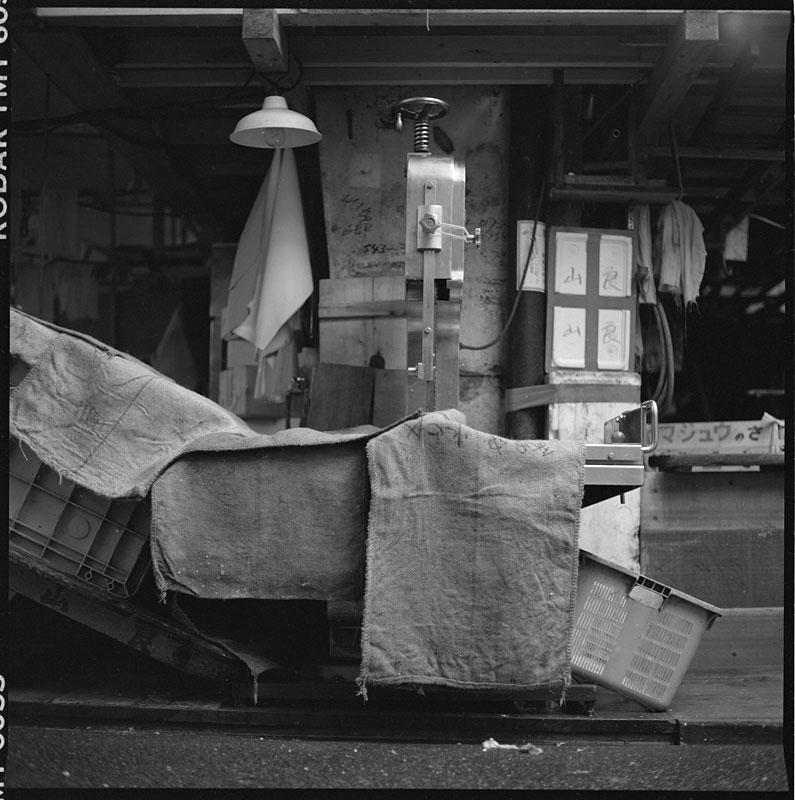 By nine o’clock in the morning, the market is deserted. Everything has been washed down and left to dry. The only sign of life is an occasional cat scavenging for food. With the surrounding city coming to life with the business of the day, Tsukiji resembles an abandoned factory rather than a vibrant fish market. Click on the image for a larger view.
By nine o’clock in the morning, the market is deserted. Everything has been washed down and left to dry. The only sign of life is an occasional cat scavenging for food. With the surrounding city coming to life with the business of the day, Tsukiji resembles an abandoned factory rather than a vibrant fish market. Click on the image for a larger view.
Tsukiji Fish Market—Part 4
 Tsukiji wholesale market, which trades in seafood and produce, covers about 22.5 hectares/56 acres with the fish market taking up the majority of the area. Built on reclaimed land in Tokyo Bay, much of the architecture dates back to its opening in 1935. The large, curved structure, which typifies the market, houses the intermediate seafood wholesalers. The auction areas are just outside that on the waterfront. Ongoing renovations have made the buildings a warren of passages and alcoves. Click on the image for a larger view.
Tsukiji wholesale market, which trades in seafood and produce, covers about 22.5 hectares/56 acres with the fish market taking up the majority of the area. Built on reclaimed land in Tokyo Bay, much of the architecture dates back to its opening in 1935. The large, curved structure, which typifies the market, houses the intermediate seafood wholesalers. The auction areas are just outside that on the waterfront. Ongoing renovations have made the buildings a warren of passages and alcoves. Click on the image for a larger view.


